When you think of a trip to India, the first thing that comes to mind is the dazzling white beauty of the Taj Mahal. Then? Um… well… Bollywood? The country has ended up being so marked by the image of the mausoleum, highlighted in recent years as one of the new seven wonders of the world, that it seems that there are no more notable attractions to visit. But yes, there are many. So much so that it is possible to draw up a list of 10 must-do things in India while leaving out a few very interesting tourist sites.
With the exception of Amritsar in the north and Mumbai in the south, Indian tourist cities are all concentrated in the heart of the country and around the capital, New Delhi. Therefore, it is quite easy to develop a travel itinerary that covers some of its best attractions without having to travel far or spend a lot of time there. Visiting Delhi, Agra, Jaipur, Udaipur and Varanasi, you will be able to see the unfading Taj Mahal and beyond.
Along the way, you will discover the magnificent forts of Rajasthan, the colorful cities, the palaces covered with mirrors or tiny windows, the mausoleums that look like jewel boxes, an unusual open-air astronomical observatory and all the Hindu spirituality on the banks of the sacred river Ganges. Discover 10 must-do things in India:
Things to do in India 1 – Taj Mahal


The mausoleum that the Mughal emperor Shah Jahan built for his third wife – Mumtaz Mahal – is the most beautiful monument to love that man has ever set eyes on. The perfection of its white marble domes and minarets, which rise 73 meters high against the blue sky, is capable of moving even those who have only seen photos of the Taj Mahal. Voted one of the Seven Wonders of the Modern World, it is by far the best-preserved historical heritage in the country. Located in Agra, a city just 180 kilometers from New Delhi, it is easily accessible by train.
The construction of the building took nearly 20 years, with work on the main mausoleum ending in 1648. Other structures, such as the symmetrical garden, took another five years. It took 22,000 workers to build the Taj Mahal, including masons, excavators, sculptors, painters, calligraphers and other artisans of the time. An estimated 1,000 elephants were used to transport the materials that would create the building. More than 28 types of precious and semi-precious stones were used in the decoration of the Taj.
Anyone wishing to see the monument at a time of day when there are fewer tourists will have to be at the gates when they open at dawn. The end of the tour also does not have a fixed time and ends at sunset. A very important detail to remember when planning to visit the Taj Mahal during your trip is that it is closed on Fridays! The entrance fee for foreigners costs 1,000 rupees, which is about 15 US dollars. For more details on how it works now, check out the step-by-step instructions for visiting the Taj Mahal.
The construction of the building took almost 20 years, with the main mausoleum being completed in 1648. Other structures, such as the symmetrical garden, took another five years. It took 22,000 workers to build the Taj Mahal, including masons, excavators, sculptors, painters, calligraphers, and other artisans of the time. An estimated 1,000 elephants were used to transport the materials that would create the building. More than 28 types of precious and semi-precious stones were used in the decoration of the Taj.
Anyone who wants to see the monument at a time of day when there are fewer tourists will need to be at the gates when they open at dawn. The end of the tour also has no set time and ends at sunset. A very important detail to remember when planning to visit the Taj Mahal during your trip is that it is closed on Fridays! The entrance fee for foreigners is 1,000 rupees, or about 15 US dollars. For more details on how it works today, check out the step-by-step instructions for visiting the Taj Mahal.
Things to do in India 2 – Ganges
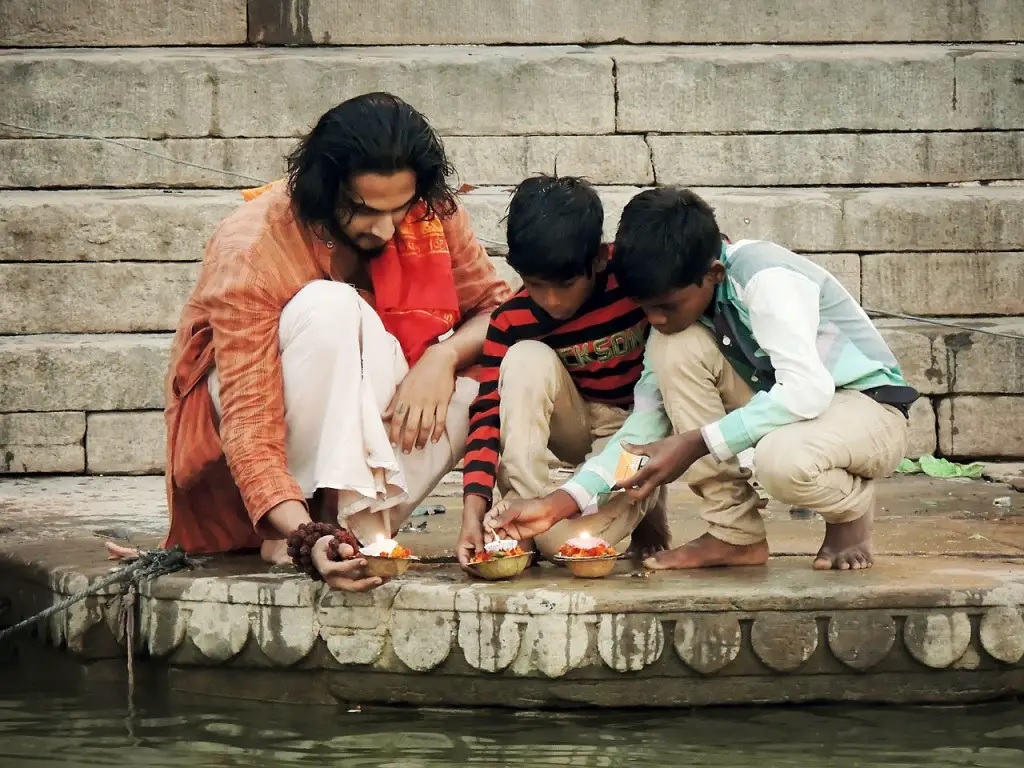

The Ganges River, or Ganga as the Indians call it, is one of the largest and most polluted rivers in the world. Its waters originate in the Himalayan mountains and flow 2,510 kilometers to Bangladesh. But it is not because of its size – and even less because of its dirtiness – that its visit is among the 10 must-do things in India. But because it is the sacred river of the Indians, the place that everyone seeks for blessing and, if possible, final rest. Some believe that life is not complete without bathing at least once in the Ganges.
The best place to see the Ganges is Varanasi, 675 kilometers from New Delhi, considered by many believers to be the holiest city in Hinduism. There, you can stroll along the “gats”, the stairs that give access to the river, and attend the beautiful Hindu ceremony at the end of the day. The boat trip at dawn is another must-see spectacle. It is at this time that the Indians bathe in the sacred waters and ask for blessings for the day that is beginning. But don’t be surprised, because they do indeed take showers: they wash their heads, their hair, under their arms. A few clean clothes and pots too.
The best way to follow and understand all this religiosity so different from the French or from Europe is to call on a local guide. He can accompany you to the ceremonies and help you avoid making mistakes, especially concerning the crematoriums. Many Indians go to Varanasi to die or have their bodies taken by their families so that the ashes are thrown into the Ganges. They are therefore cremated in gigantic wooden pyres that operate 24 hours a day on the banks of the river. It is possible to observe from afar, but the moment of pain of the families must be respected.
Things to do in India 3 – Hawa Mahal

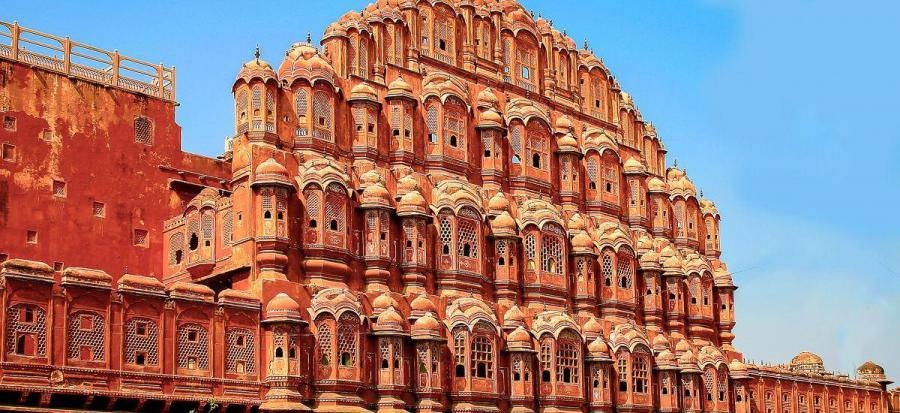
Although it is located in the middle of a busy and noisy avenue in the center of Jaipur, 270 kilometers from New Delhi, the Hawa Mahal is one of the most representative postcards of India and the Rajasthan region. Its red sandstone facade is dotted with hundreds of tiny windows, from which the women of the court could see the streets of the Pink City without being seen. Also called the “Palace of the Winds”, it was built in 1799 by Maharaja Sawai Pratap Singh.
Inside, there is not much to see except a small courtyard and the endless parade of small rooms decorated with small colored windows, which served as quarters for the women. To access the ticket office, you have to turn the first corner on the right of the facade of the palace, then right again. Visiting hours are from 9am to 4:30pm. Hawa Mahal is located in the very centre of Jaipur and is easily accessible on foot or with a short tuk tuk ride, depending on where you are staying in the city. Entrance for tourists costs 500 rupees (about US$6).
Things to do in India 4 – Red Fort (Delhi)
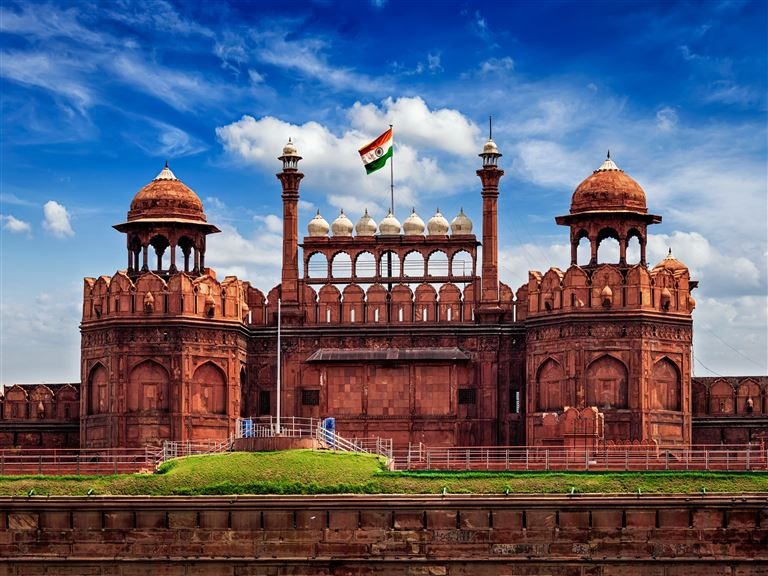
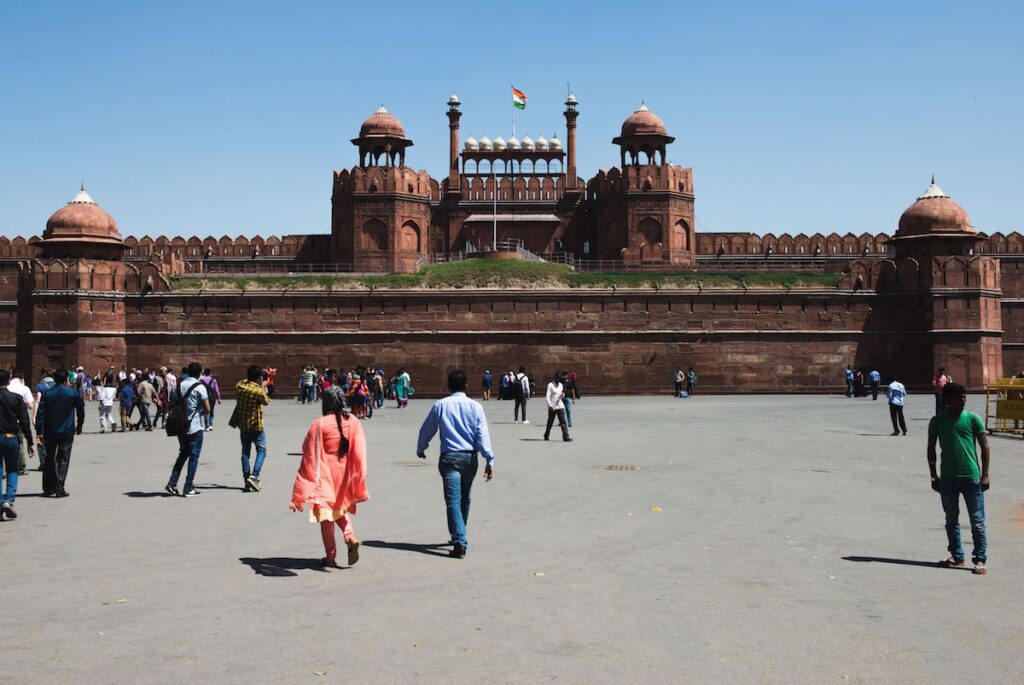
While it doesn’t compare in beauty and preservation to Agra Fort (Delhi) or Amber Fort (Jaipur), the Red Fort in New Delhi is still one of the top 10 things to do in India. Gigantic and imposing, it has centuries of history to tell. It was on its red sandstone walls that the first flag of India, a free country of the British Empire, was raised in 1947. And this gesture has been repeated every year since. But the history of the fort begins long before that.
In 1638, Mughal Emperor Shah Jahan – the owner of the Taj Mahal – moved the capital of the kingdom from Agra to New Delhi and rebuilt an old fort in the city to make it his residence and seat of government. This gave rise to the 103-hectare defensive complex, surrounded by 2.4 kilometres of walls that rise up to 33 metres high. Highlights of a visit to the fort include the entrance gate – the Lahori Gate – and the Diwan-i-Aam, the public audience space where the emperor’s throne was located.
There are several buildings spread throughout the complex, as well as a large garden, but many are closed due to lack of restoration. In the evening, you can take part in a sound and light show that tells the centuries-old history of the fort. Access to the Red Fort is easy via the Chandni Chowk metro station. Visiting hours are from 9:30 am to 4:30 pm and the monument is closed on Mondays. Entrance for foreign tourists costs 500 Indian Rupees (about US$8). The evening show in English starts between 7:30 pm and 9:00 pm, depending on the season, and costs about US$1.50.
Things to do in India 5 – Baby Taj “Itimād-ud-Daulah”
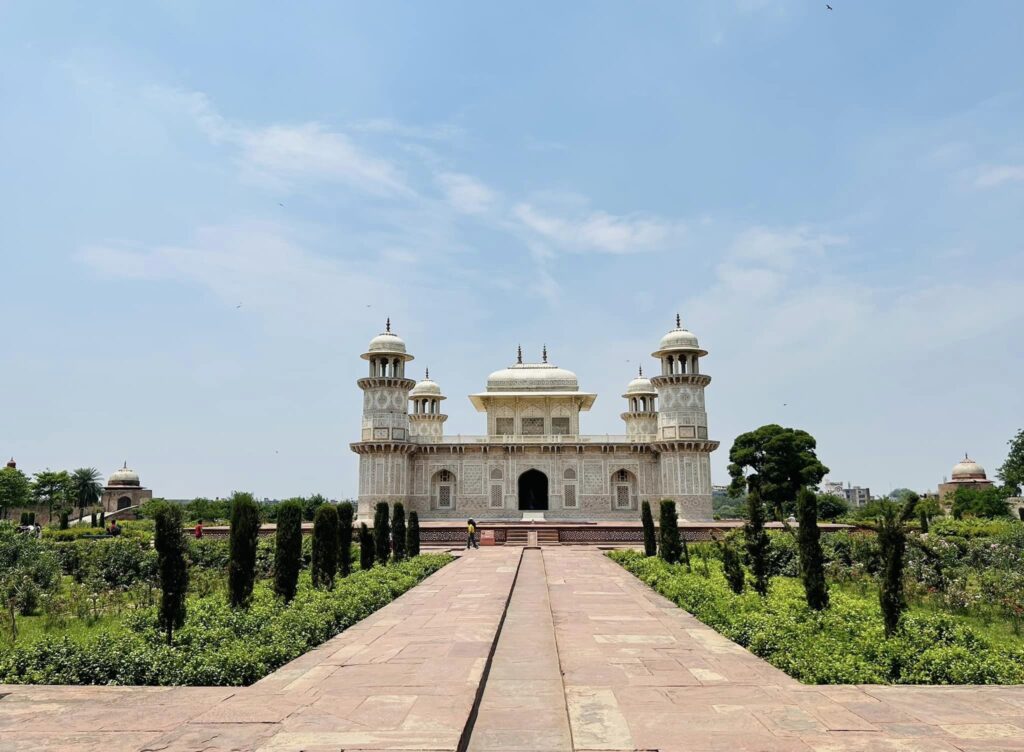
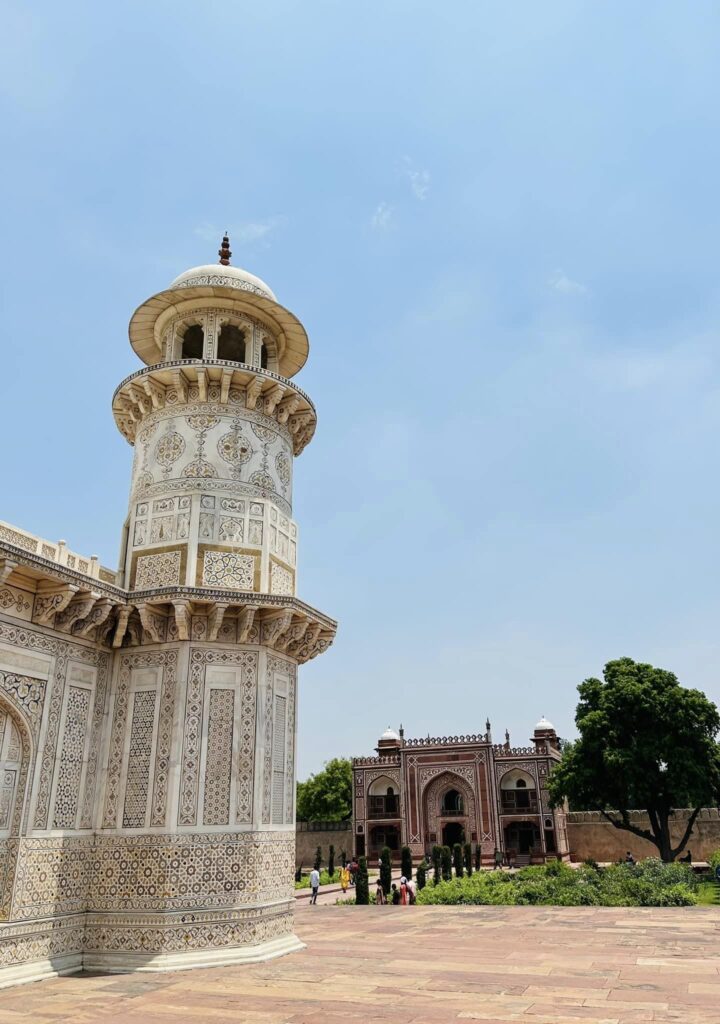
“Baby Taj” is the nickname, so to speak, of the almost unpronounceable tomb of Itimād-ud-Daulah. Like the Taj Mahal, it is located in the city of Agra, just 220 kilometres from New Delhi and easily accessible by train. It was India’s first “garden mausoleum” built entirely of white marble rather than red sandstone. The nickname comes from the obvious similarity to the Taj Mahal, being a miniature of the gigantic tomb built by the Mughal emperor Shah Jahan.
Things to do in India 6 – Jantar Mantar, Jaipur
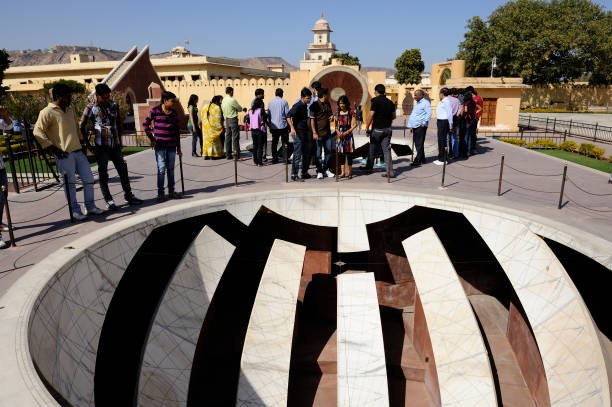
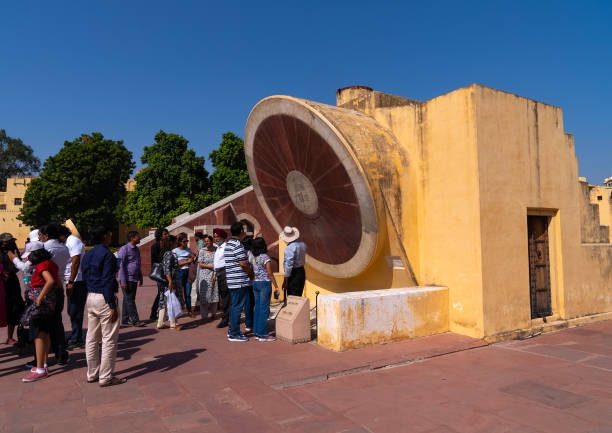
Some people may remember the Jantar Mantar astronomical observatory from the opening scenes located in the heart of Jaipur, it is one of the many tourist attractions in the Pink City of Rajasthan, 270 kilometres from New Delhi. The Jantar Mantar is a collection of nineteen architectural instruments for astronomical observation built by King Sawai Jai Singh II in 1734. Among them is the largest stone sundial in the world.
Made of wood, stone and bronze, they allow the naked eye to observe the position of the stars. Jantar Mantar is located in the very centre of Jaipur and is easily accessible on foot or with a short tuk tuk ride, depending on where you are staying in the city. Visiting hours are from 9am to 5pm, with noon being recommended as the best time due to the sun’s position in the astronomical observation structures. Entrance for foreign tourists costs 200 Indian rupees (about 3 US dollars).
Things to do in India 7 – Amber Fort

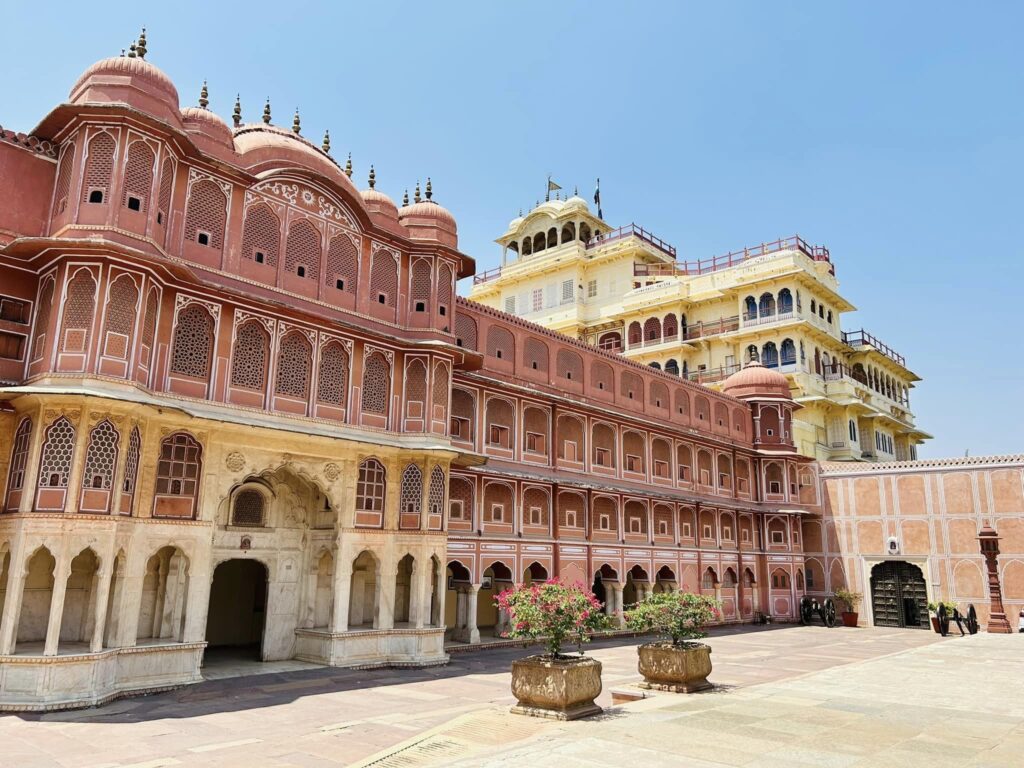
Amber Fort is certainly the most beautiful fort in India, surpassing Agra Fort, Red Fort and other forts in the Rajasthan region. It is located 11 kilometers from the city center of Jaipur, which is in turn 270 kilometers from the capital, New Delhi. Built on top of a hill on the banks of Lake Maota, the building took on the beautiful forms that it still presents today, in red sandstone and white marble, during the reign of Raja Man Singh, in the 16th century.
The fort is divided into four sections: in the first, there is Ganesh Pol, which is the impressive entrance gate to the fort palace. In the second, the highlight is the Diwan-i-Aam, a platform topped with 27 pillars from where the raja heard public petitions. In the third and most beautiful, there is the air-conditioned garden and the famous “Sheesh Mahal”, or palace of mirrors. The fourth is the least preserved part of the fort and houses only a series of empty rooms where the quarters of the women of the court were located.
To get to Amber Fort, the quickest and most convenient option is to order a taxi or hire a private driver. Tours run from 8am to 6pm and the entrance fee is 550 Indian rupees (about US$8). A sound and light show telling the story of the fort takes place daily at 7:30pm, in English. Tickets cost 200 Indian rupees (about US$3).
Things to do in India 8 – Udaipur City
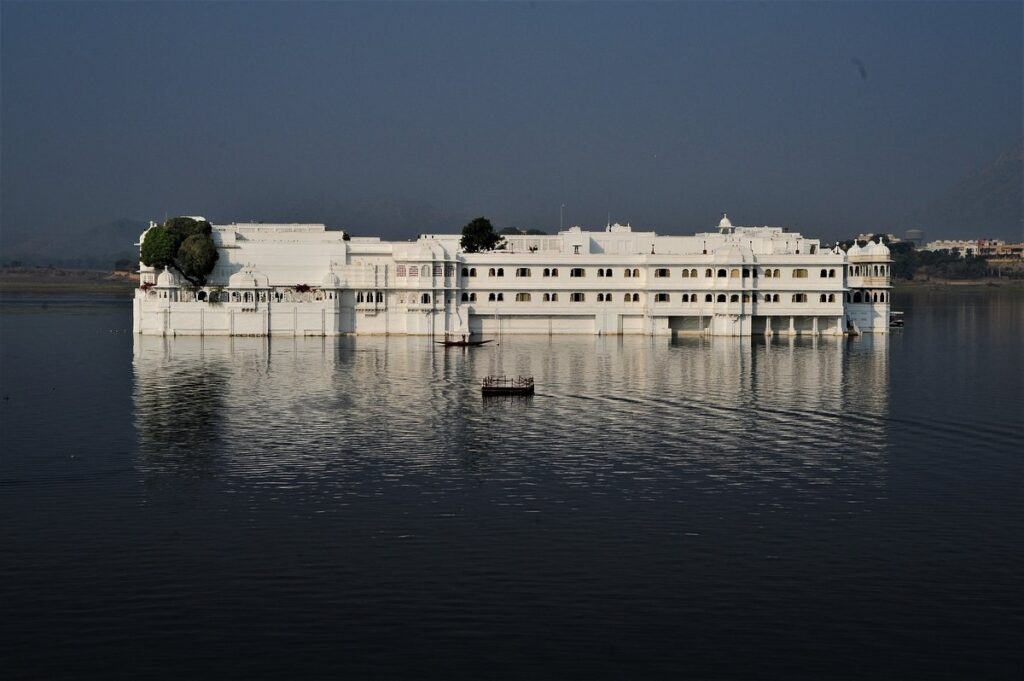

The White City, as Udaipur is known, is the cleanest and least polluted place in tourist India and one of the few places where you can stroll through the small streets and window shop almost undisturbed by vendors or stepping in cow dung, sewage and other waste. There are no major attractions in the city, which is located in the Rajasthan region, over 670 kilometres from New Delhi. What makes it one of the top 10 things to do in India is its “wind in your hair” climate on the banks of Lake Pichola.
Choosing one of the countless restaurants located on the terraces of buildings to dine while the sun sets over the water is a must. If the place you have chosen has a daily screening of “007 vs. Octopussy”, stay there and enjoy the film, which invariably starts at 7 pm. Otherwise, find another restaurant to watch out for. “Octopussy” was filmed in Udaipur and the city is so proud of having its own 007 that to this day, several bars and restaurants screen the film daily. It’s definitely one of the most unusual tourist attractions in the world, hehe.
You can also visit the “City Palace”, a beautiful building built in 1550, and which housed several generations of local maharajas. Today, it functions as a museum, and you can visit the interior. It is also from the “City Palace” that boats depart for the Taj Lake Palace hotel. The establishment is one of the most luxurious in India and is located on its own island above Lake Pichola, with a small outdoor area and a restaurant open to the public.
Things to Do in India 9 – Humayun’s Tomb

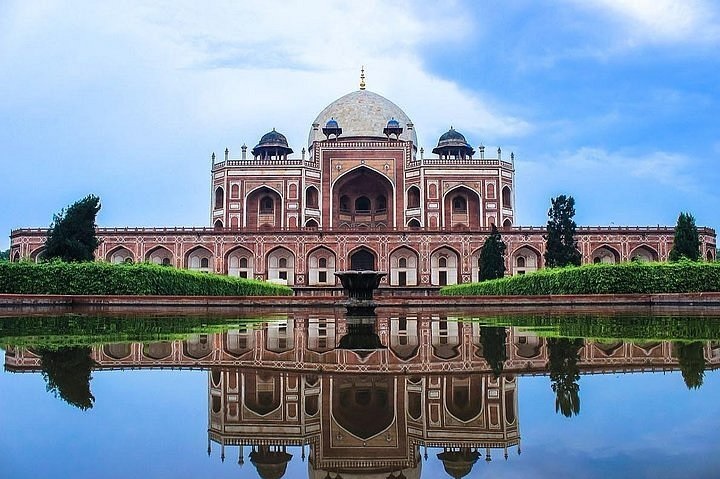
Located in the Indian capital, New Delhi, the tomb is the final resting place of Emperor Humayun, a member of the Mughal dynasty, one of the most famous to rule India. This magnificent building was the country’s first “garden mausoleum,” upon which many others would later be built, including the Taj Mahal. The red sandstone, white-domed tomb was commissioned by Humayun’s widow, Empress Bega Begam, in 1565.
Later, countless other rulers were buried here, giving rise to a complex of buildings around the main tomb. “Humayun’s Tomb” is located near the JLN Stadium Metro Station and can be visited daily from dawn to dusk. Entrance for foreign tourists costs 500 Indian Rupees (approximately US$8).
Things to Do in India 10 – Agra Fort
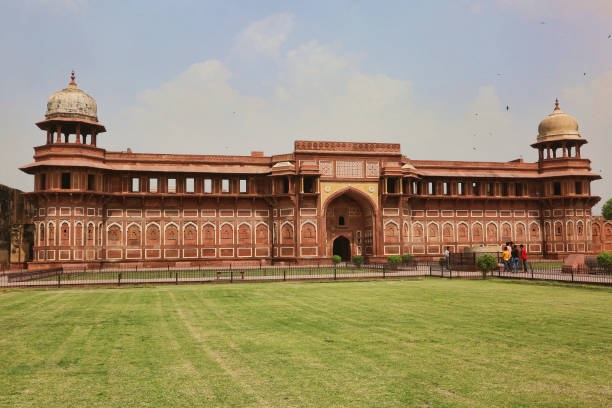
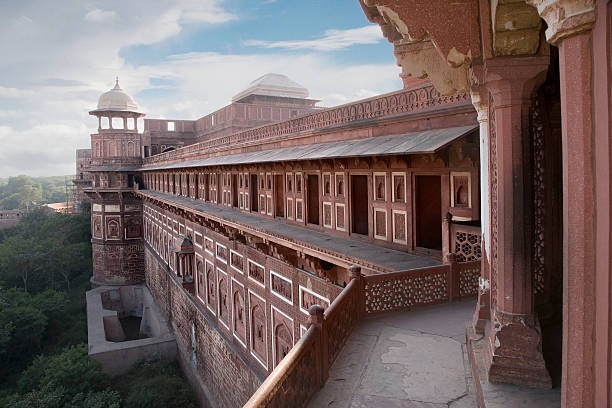
Although it is often overshadowed or even ignored in comparison to the fame of the neighboring Taj Mahal, Agra Fort certainly comes in second to the number one spot among the top 10 things to do in India. Located in Agra, a city just 180 kilometers from New Delhi and easily accessible by train, this massive defensive bastion occupies an area of no less than 380,000 square meters. Only a portion of it is open to tourism, as it is still used by the Indian Army. But that’s to be thankful for, otherwise it would be a very, very long visit.
Although it was built in the 1400s by the Mughals, one of the most famous Arab dynasties to rule India, the fort acquired its reddish color much later, in 1565. Around 4,000 people worked daily for eight years to clad it with sandstone walls. Another impressive figure at Agra Fort is the size of the double walls, which rise 21 meters high around three sides of the fortress – the fourth faces the Yamuna River. Inside them is a complex of about 30 rooms, halls, courtyards, gardens, mosques, tombs and other buildings dating from the era that survived British rule.
The Mughal emperor Shah Jahan, who built the Taj Mahal, ended his days imprisoned in Agra Fort by his own son. Legend has it that from his cell he used a diamond as a magnifying glass to be able to see the mausoleum, built to the south of the city. Anyone visiting Agra Fort today can see the same view that Shah Jahan had of the building, but without the diamond and with much more pollution. Visiting hours are from dawn to dusk and the entrance fee is 500 Indian rupees (about US$8).




